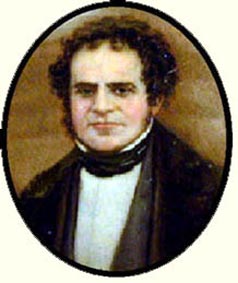Welcome to The New Baxter Society
The New Baxter Society is a not-for-profit organisation concerned with the
collection, preservation and study of the colour prints of George Baxter, his
Licensees and other Nineteenth-Century Colour Printers.
 George Baxter made his name as a colour picture printer in the mid 19th century
as his patented process was instrumental in bringing affordable high quality
decorative colour prints to the masses. His first commercial colour
printing appeared in the 1830s and took the form of book illustrations,
effectively replacing some of the hand colouring that made coloured books so
expensive to buy.
George Baxter made his name as a colour picture printer in the mid 19th century
as his patented process was instrumental in bringing affordable high quality
decorative colour prints to the masses. His first commercial colour
printing appeared in the 1830s and took the form of book illustrations,
effectively replacing some of the hand colouring that made coloured books so
expensive to buy.
Around 1850 Baxter licensed his
process to a number of competing printers including
Abraham Le Blond, Joseph Kronheim,
Bradshaw & Blacklock, Joseph
Mansell, William Dickes and Myers & Co.
Whilst George Baxter and his Licensees are probably best known for their book
illustrations and decorative prints for the wall, they were also instrumental
in the rapid growth of colour embellishments for commercial goods. Their Baxter
Process prints were used extensively on mid nineteenth century valentines and
school reward cards when William Dickes became the major supplier to the Society
for Promoting Christian Knowledge and Kronhiem did the same for the Religious
Tract Society.
The textile trade was an early adopter of colour printing for embellishment of
their products – needle boxes and pin cushions were decorated with Baxter Process
prints and these prints were used (particularly for the export market) on wrappers
for handkerchiefs and other linen products as well as for fabric bolt labels/tickets
that bear the pattern number and yardage.
More recently we have discovered that Kronheim provided colour prints, that were in
fact cigarette wrappers, for the La Honradez brand of cigarettes from the factory of
Luis Susini é Hijo in Cuba before that firm set up their own extensive chromolithographic
workshop within the cigarette factory. These cigarette wrappers (marquillas cigarros) were collectable being
decorated with different sets of themed prints. Were they the forerunners of the cigarette
cards that became so collectable in the 20th century?
George Baxter's Gems of the Great Exhibition no.2 Belgian department
Baxter's success was relatively short-lived as improvements in the cheaper
chromolithography processes saw them take centre stage in the later part of the
19th century. Exponents of chromolithography included M & N Hanhart, Day & Son,
Thomas Nelson, Leighton Brothers and some of Baxter's Licensees.
If you would like any further information about The New Baxter Society, George
Baxter, his licensees or their work, please contact us. Your enquiry will be
answered using our library of reference books or passed on to one of our
"expert" members. We are fortunate to have amongst our membership, authors of
Baxter reference books, descendants of Baxter's family and enthusiasts who have
been collecting for many years. We are happy to try to identify prints and to
give an estimate of valuation.